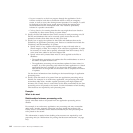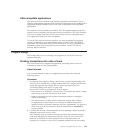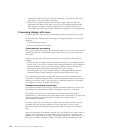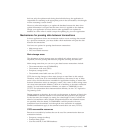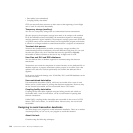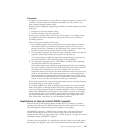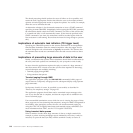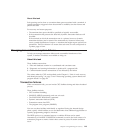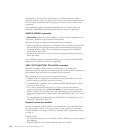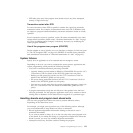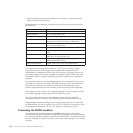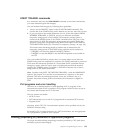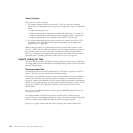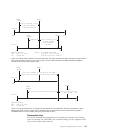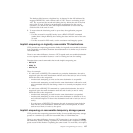For example, if file input and output errors occur (where the default action is
merely to abend the task), you might want to inform the master terminal operator,
who can decide to terminate CICS, especially if one of the files is critical to the
application.
Your installation might have standards relating to the use of RESP options or
HANDLE CONDITION commands. Review these for each new application.
HANDLE ABEND commands
A HANDLE ABEND command can pass control to a routine within a transaction, or to
a separately compiled program when the task abends.
The kind of things you might do in abend-handling code include:
v Capturing diagnostic information (in addition to that provided by CICS) before
the task abends, and sending messages to the master terminal and end user
v Executing cleanup actions, such as canceling start requests (if the PROTECT
option has not been used)
v Writing journal records to reverse the effects of explicit journaling performed
before the abend.
Your installation might have standards relating to the use of HANDLE ABEND
commands; review these for each new application.
EXEC CICS SYNCPOINT ROLLBACK command
ROLLBACK might be useful within your transaction if, for instance, the
transaction discovers logically inconsistent input after some database updates have
been initiated, but before they are committed by the syncpoint.
Before deciding to use it, however, consider the following:
v Rollback backs out updates to recoverable resources performed in the current
unit of work only and not in the task as a whole.
v The SYNCPOINT command, with or without the ROLLBACK option, causes a
new unit of work to start.
v If you have a transaction abend, and you do not want the transaction to
continue processing, issue an EXEC CICS ABEND and allow dynamic transaction
backout to back out the updates and ensure data integrity. Use rollback only if
you want the application to regain control after nullifying the effects of a unit of
work.
For programming information about the SYNCPOINT command, see the CICS
Application Programming Reference.
Dynamic transaction backout
Dynamic transaction backout (DTB) occurs automatically for all transactions that
have recoverable resources. It is not an option you can specify on a transaction
resource definition. The actions of DTB are described under “Transaction backout”
on page 74.
Remember that:
v For transactions that access a recoverable resource, DTB helps to preserve logical
data integrity.
v Resources that are to be updated should be made recoverable.
150 CICS TS for z/OS 4.1: Recovery and Restart Guide



